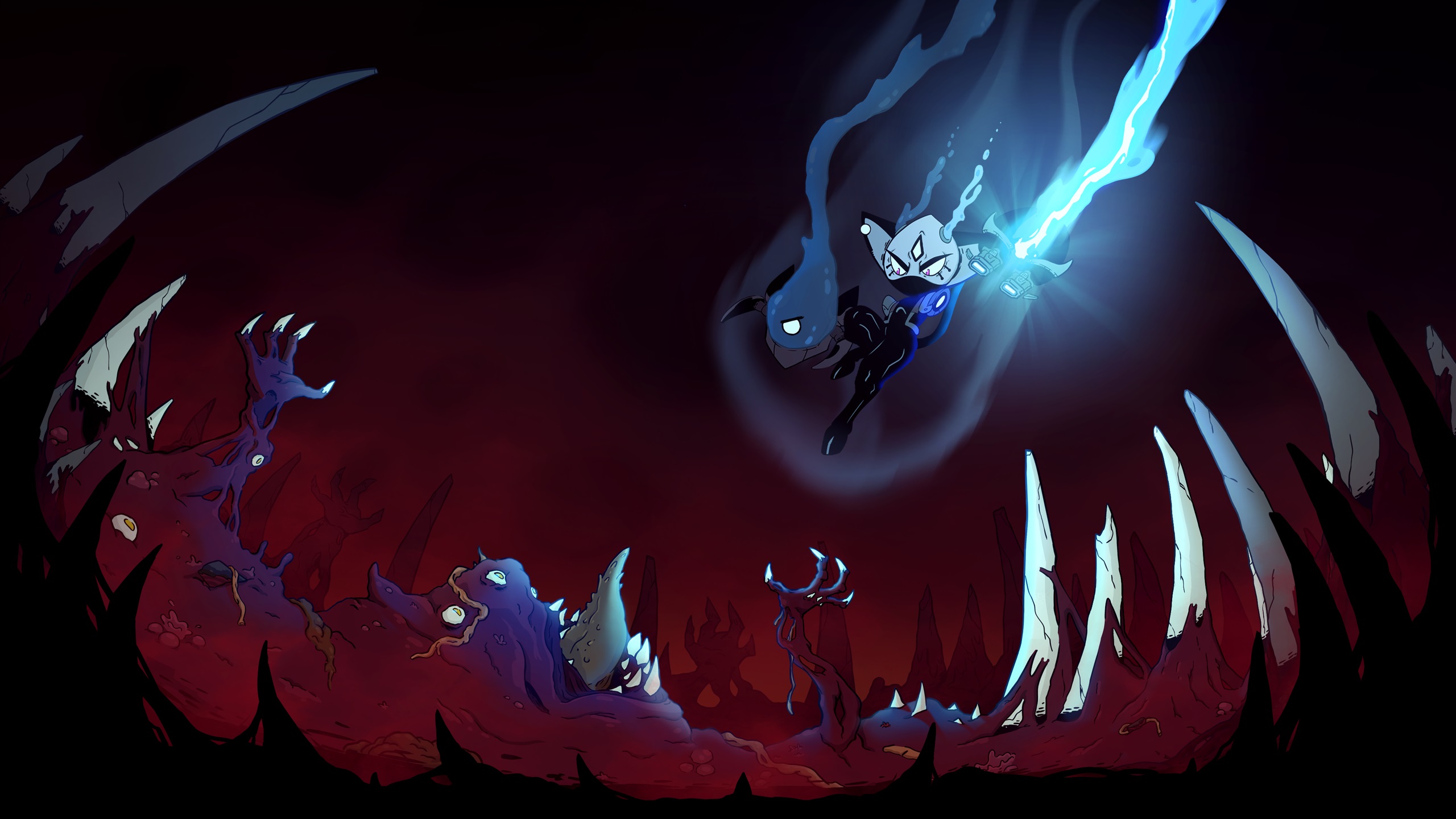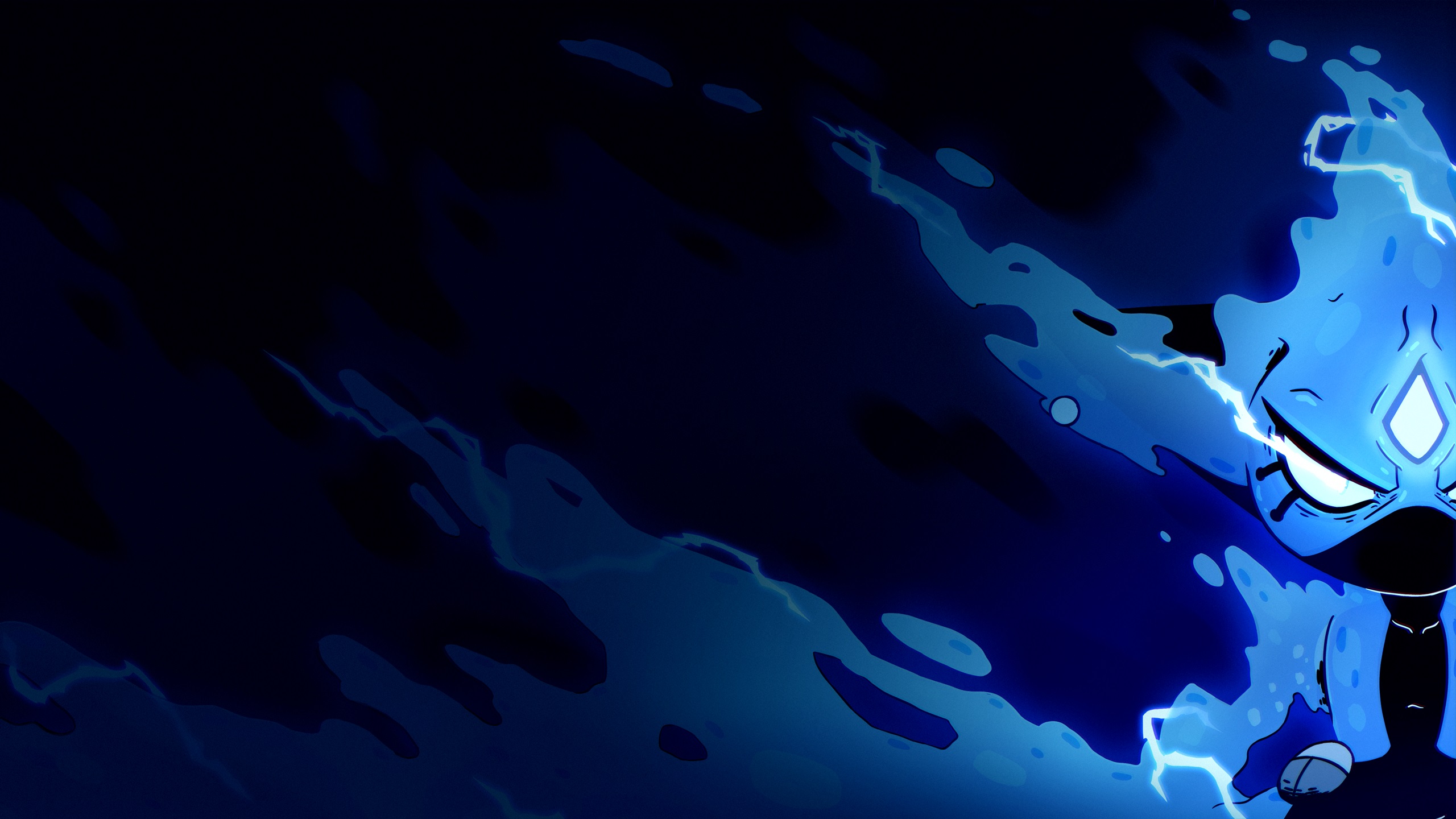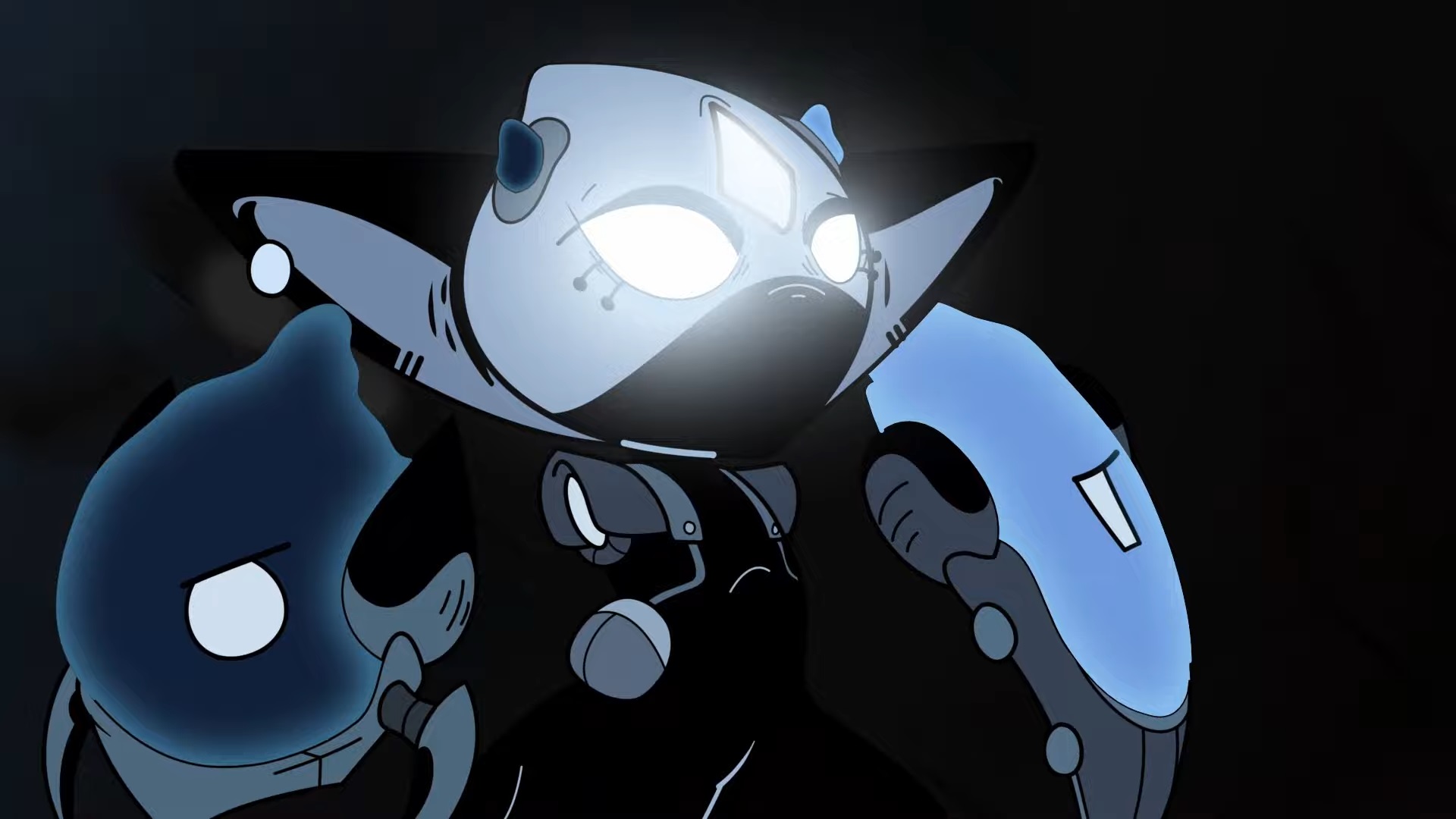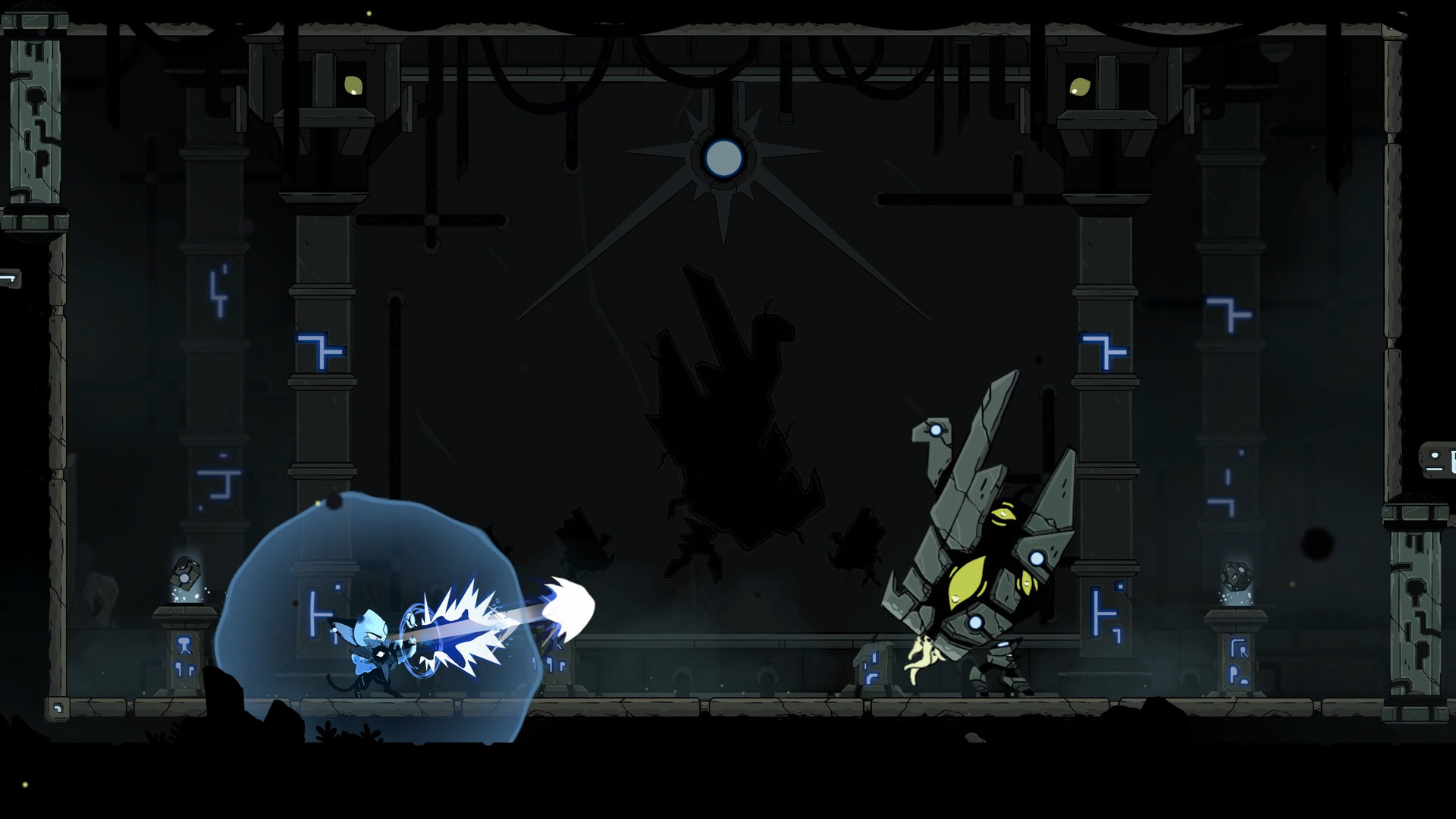
Upcoming Metroidvania Biomorph caught my eye almost a year ago with, as developer Lucid Dreams Studio put it, a "Hollow Knight meets Kirby" monster mash formula. I was pretty into the game after trying its short, 10-minute Steam demo (still playable right now). After playing its greatly extended demo (coming soon in the February Steam Next Fest), I am very into it. I feel like I've got a much better handle of the scope and feel of the game, and thanks to this demo as well as a chat with Lucid Dreams CEO Maxime Grégoire – who's been in games for over 10 years, mostly at Eidos Montreal, and formed this studio with former Far Cry dev Francis Lapierre – I'm extremely eager to play the whole thing on PC (or Switch) later this year.
The right kind of game

Biomorph is a side-scrolling action game where you play as a fierce yet cute Lombax-looking critter named Harlo, joined by two talking, floating gauntlets that are both weapons and pals. Harlo feels good to control thanks to an intuitive jump arc, a smooth dash where you liquefy yourself to slide under attacks and enemies, and – even among the limited demo selection – some punchy melee and ranged weapons that allow for surprisingly in-depth combos and juggling. The new demo's final boss is miles ahead of the previous one, and after beating it following three close deaths, I was gutted to see the "thanks for playing" screen come up simply because I wanted to hit more stuff.
One thing I found fascinating – because I absolutely cannot help myself when it comes to this stuff – is that Lucid Dreams has deliberately moved away from the Soulslike label compared to Biomorph's earlier marketing. Why? Grégoire says the team didn't want to set anyone up for disappointment.
"In Soulslike titles, a really, really huge part of the game is based on the difficulty," he says. "And something that we didn't want to do is for the game to be super difficult. There's some extra content that will be harder, like some platforming parts that, well, you need to be good. And that's fine. But it's extra content. We still wanted to create a game that can be played and completed by somebody that, of course, has played games before, but is not like a super expert. At first, when we were doing some play tests, the game was just too hard. And we're like, do we really want to do that? We've seen reviews about other Metroidvanias that came out the past few years, and most of the time, people are just, I don't know, there's people tired of playing, you know? I just want to have some fun, be able to play and complete the game that I bought.
"So we think, well, if we call it a Soulslike game and we do not offer a Soulslike experience, we could piss off some people. And we don't want that. We just want people to at least know what they want. Not that the game is not hard, the extra bosses will be harder, but the main path will be doable. And this is not the case for most of the Soulslike games out there; it's the full experience that is hard."
Putting the morph in Biomorph

The real killer app with Biomorph is that Harlo can turn into – that is, biomorph into – a wide variety of creatures, assuming their physical form and replicating their attacks and movements. Need to break a thick wall? Copy a big, strong golem. Can't reach a ledge? Maybe turn into something with wings. Where many UI and gameplay elements are leaning on Hollow Knight, this is where the Kirby DNA comes through in a cool way – but Grégoire says we can actually thank another Nintendo classic for the initial idea.
"When we completed our first game, Legends of Ethernal, we did it as a team of three people," he explains. "It was a work of love to ship that game. And it was action-adventure, so we had all the technology to build another game. And I was playing Super Mario Odyssey at the time, because it came out when we started thinking about the second project for the company. And I was like, well, that's pretty neat. I like, when I throw my hat, I have the skill set of the creatures. So we thought, why don't we do a prototype based on that? And we did, and it was pretty fun. It was great to be able to have different moves. So we said hey, let's push that further and create a game based on that.
"There are so many Metroidvanias out there that we didn't want to release a game that was only a twist on the lore. There are many where it's always the same mechanic but some are sci-fi, some talk about different aspects, but there's not much new mechanically. So we thought that by adding that biomorph mechanic, we actually add something that is quite different. It's a player fantasy sometimes, that you get to play as creatures that you killed. So this is how the idea came to be. Initially, it was really Mario Odyssey."

There are about 15 different creature forms (or so the UI in my demo implied), and while you're initially limited to copying nearby corpses, by using the same forms repeatedly you can permanently unlock them and assign a few of them to your loadout. This works just like your weapons, abilities, and equipment (think Hollow Knight charms), which all have limited slots that can be reallocated at save points. I didn't realize this at all in the first demo, and the combat and exploration implications of having the monster forms of my choice on tap are making my head spin. It's a huge addition to the Metroidvania genre's search-action formula. It's not just me, either; Grégoire says that balancing for all the creature forms, and finding the literal balance of vanilla Harlo and biomorphed play time, was difficult.
"Right now, even the demo that you have, a main issue that we had was the balance. We're still working on that, but it was the balance between the weapon that you have as the player and the weapon that you have as the creatures. I did a system that is more reminiscent of Ender Lilies. [For example,] the weapon that you have, the gun, was overpowered. Somebody could kill the boss because you always add infinite charge, so somebody could get on the wall and just shoot. So we needed to be wise about how we handled that. And there were some creatures that can throw a boomerang, or something like that, which is a little bit like the gun because it can deal multiple hits if there are multiple creatures in this path.
"We needed to be wise about that. So by putting some charge on the weapon of the main character, it helps to create a better balance in that time that you spend as the monster and the time that you spend as the main character. This is what we really wanted, people to be able to play between the two."
Cherries on top

The central copycat mechanic also feeds back into that classic Metroidvania exploration and progression in another interesting way. When you absorb a creature's abilities, that specific creature – not every member of the species – will grow stronger over time, to the point that it will have new attacks and abilities when you encounter it while backtracking later into the game. This adds a small cost to using your alternate forms, and in theory, it makes for a more dynamic difficulty curve.
"We really wanted to have some increase of difficulty, and at the same time, it's up to the player to do it or not," Grégoire adds. "You need to biomorph a creature a certain amount of times to add it to what we call the arsenal, where you can transform back at will. But when you biomorph more creatures, you can unlock a new level for that creature so it gets stronger on your side. You have a stronger version when you are that creature. But if you don't like it, you can choose not to biomorph more of these creatures. So you can choose which one you want to maximize, and which one you want to say, 'oh, I don't really like that specific creature, I don't want to maximize it because I'll be coming back here later and it would just be harder for me.' So it's really a choice that we wanted to give to the player."
Another element I didn't get a great feel for in the demo, and which I wouldn't expect to see in a Metroidvania like this, is Biomorph's Animal Crossing-lite settlement system. You collect and unlock blueprints for buildings to plop down in the game's central city, and beyond improving upgrade facilities like merchants and blacksmiths, there's an element of cosmetic customization to this too. It's not a super in-depth city builder, but it's more than a passing distraction. Grégoire compares it to Spiritfarer, and while it's "not a feature that would be used super hardcore," he says there's enough room for you to "choose how you want the city to look, a little bit more like in a game like Animal Crossing." It's yet another interesting layer to a Metroidvania that's ended up being much more involved and intriguing than I initially expected, and another reason I'll be near the front of the line when Biomorph releases later this year.







